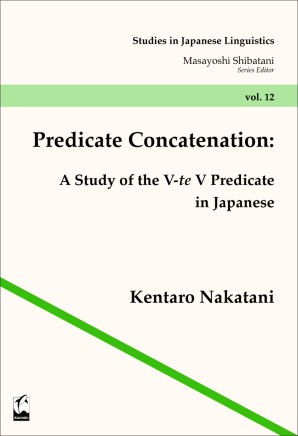
品切
Studies in Japanese Linguistics 12
Predicate Concatenation: A Study of the V-te V Predicate in Japanese
KentaroNakatani[著]
- 定価
- 4,620円(4,200円+税)
- ISBN
- 978-4-87424-578-1 C3081
- 発売日
- 2013/4/2
- 判型
- A5
- ページ数
- 280頁
- ジャンル
- 言語学・英語学 ― <Studies in Japanese Linguistics>
二つの動詞が連結し、一つの述語として機能する複雑述語。その「述語連結」の派生メカニズムを、テイク、テシマウ等12種のテ形複雑述語に焦点を当てて統語論・意味論の両側面から追求し、それらに通底する派生原理を考える。
<Studies in Japanese Linguistics>
■Masayoshi Shibatani 編・・・(全文を読む)
日本語学についての英語の博士論文を厳選してシリーズ化。様々な理論的フレームワークにおいて広範なトピックを網羅する日本語学の分野に、新しい創造性に富んだ研究を提示(品切あり)。
関連情報
- 目次
- Studies in Japanese Linguistics 12
Predicate Concatenation: A Study of the V-te V Predicate in Japanese
Kentaro Nakatani(中谷健太郎)
Contents
1 Introduction
2 The V-te V Predicate: An Overview
2.1 Complex Predicates
2.2 Complex Predicates in Japanese
2.3 The V-te V Predicate
2.3.1 Verbs of coming/going
2.3.2 Verbs of giving
2.3.3 Verbs of putting
2.3.4 Verbs of vision
2.3.5 Verbs of existence
2.3.6 Desiderative adjective hosi(-i)
2.4 Conclusion
3 Toward a Derivational Approach
3.1 Aux Hypothesis (1):Totally Unrelated?
3.2 Aux Hypothesis (2):Distinct but Somehow Associated?
3.3 Aux Hypothesis (3):Associatively Derived and Separately Stored?
3.4 Aux Hypothesis (4):Feature-Switching?
3.5 Conclusion
4 Analyzing -te
4.1 Core Function of-te
4.2 Morphosyntax of-te
4.2.1 Syntax of -te
4.2.2 Morphology of -te
4.3 Tense Computation of -te and -ta
4.3.1 Event-based interpretation of Ogihara’s (1996) model
4.3.2 Sequencing T vs. anchoring C
4.4 Event Interlacing
4.5 Zero Conjunction and -te Conjunction
4.6 Conclusion
5 Syntax of the V-te V Predicate
5.1 Dual Property of the V-te V Predicate
5.1.1 Complexity of the V-te V predicate
5.1.2 Simplicity of the V-te V predicate
5.2 Syntactic Derivation of the V-te V Predicate
5.2.1 Previous analyses
5.2.2 Proposal
5.3 Problems of the Embedded Subject
5.3.1 Subject sharing
5.3.2 V-te moraw (‘be given’)
5.3.3 V-te hosi(-i) (‘want’)
5.3.4 V-tear (‘exist’)
5.4 Conclusion
6 Semantics of the V-te V Predicate: General Principles
6.1 Generative Lexicon: Framework
6.1.1 On polysemy
6.1.2 Representations in GL
6.1.3 Aspectual properties of qualia structure
6.1.4 Qualia as stages
6.1.5 Event types
6.2 Main Ingredients
6.2.1 COLLAPSE
6.2.2 PRINCIPLE OF CAUSATION FLOW (PCF)
6.2.3 VARIABLERE INTERPRETATION
6.2.4 Acceptable violations of PCF
6.2.5 THEME EVENTIFICATION
6.3 Conclusion
7 Semantics of the V-te V Predicate: Specific Rules
7.1 Verbs of Coming/Going
7.2 Verbs of Giving
7.2.1 kure/age ‘to give (to the speaker/non speaker)’
7.2.2 moraw ‘to be given/obtain’
7.2.3 Entailment in kure, age and moraw: a pilot survey
7.3 Verbs of Putting
7.4 Verbs of Vision
7.4.1 mi‘to see’
7.4.2 mise ‘to show’
7.5 Verbs of Existence
7.5.1 i vs. ar
7.5.2 ar ‘to exist (inanimates)’
7.5.3 i‘to exist (animates)’
7.6 Desiderative Adjective hosi(-i)
7.7 Conclusion
8 Concluding Remarks
8.1 A Note on Reductionist vs. Non reductionist Approaches
8.2 List of Assumptions Made in This Study
著者紹介
「言語学・英語学 ― <Studies in Japanese Linguistics>」の他の本
-
 The Syntax of 'Subjects'
2000/6/10 発売
The Syntax of 'Subjects'
2000/6/10 発売
-
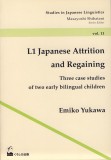 L1 Japanese Attrition and Regaining
Emiko Yukawa 著
1998/10/1 発売
L1 Japanese Attrition and Regaining
Emiko Yukawa 著
1998/10/1 発売
-
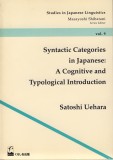 Syntactic Categories in Japanese
Satoshi Uehara 著
1998/6/17 発売
Syntactic Categories in Japanese
Satoshi Uehara 著
1998/6/17 発売
-
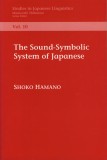 The Sound-Symbolic System of Japanese
Shoko Hamano 著
1998/1/1 発売
The Sound-Symbolic System of Japanese
Shoko Hamano 著
1998/1/1 発売
-
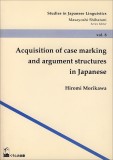 Acquisition of Case Marking and Argument Structures in Japanese
Hiromi Morikawa 著
1997/10/22 発売
Acquisition of Case Marking and Argument Structures in Japanese
Hiromi Morikawa 著
1997/10/22 発売
-
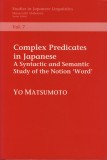 Complex Predicates in Japanese
1996/12/31 発売
Complex Predicates in Japanese
1996/12/31 発売
-
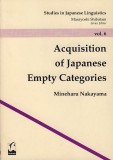 Acquisition of Japanese Empty Categories
Mineharu Nakayama 著
1996/5/1 発売
Acquisition of Japanese Empty Categories
Mineharu Nakayama 著
1996/5/1 発売
-
 A Study of Japanese Clause Linkage
Yoko Hasegawa 著
1996/1/1 発売
A Study of Japanese Clause Linkage
Yoko Hasegawa 著
1996/1/1 発売
-
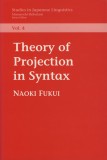 Theory of Projection in Syntax
Naoki Fukui 著
1995/1/1 発売
Theory of Projection in Syntax
Naoki Fukui 著
1995/1/1 発売
-
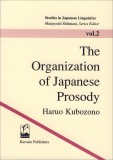 The Organization of Japanese Prosody
Haruo Kubozono 著
1993/6/4 発売
The Organization of Japanese Prosody
Haruo Kubozono 著
1993/6/4 発売

